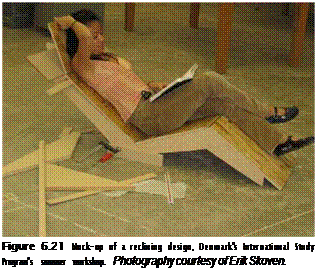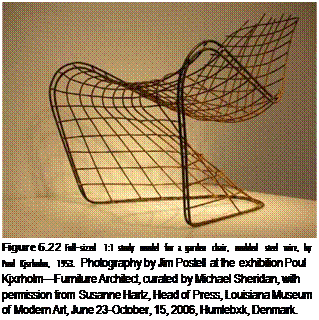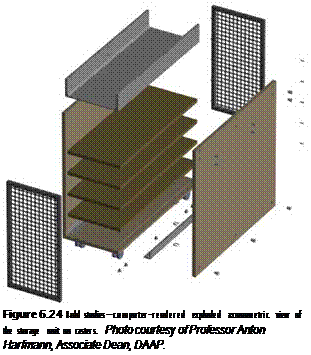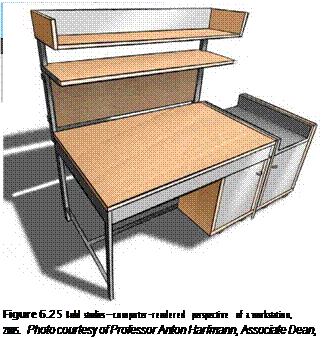Designing furniture is a creative activity shaped by the give-and-take between thinking and making. Thinking and making inspire design conceived within the limits of fabrication. With hands firmly grounded in the world of materials and tools and the mind engaged in the ephemeral realm of ideas, furniture designers work to connect and infuse ideas with physical realities.
How furniture looks and feels is often dependent on how well it was made. Furniture designers attempt to design well-engineered, sturdy furniture, but the academic and profes-

 sional division between design and fabrication can make the process of investigating and resolving engineered solutions difficult. Hand drawings and computer renderings respond neither to applied forces nor to the properties of material. Scaled models can respond to gravity and lateral forces but cannot reveal the integrity of materials and the strength of joinery in the reduced scale of a study model. Full-sized mock-ups communicate a sense of scale and function to the designer but may have little correlation to the actual material or the tactile experience of furniture (Figure 6.21). The full process of design must include making a prototype, an exact or nearly exact version of the finished or manufactured piece, capable of experiential use and testing. There are many variables to consider in designing furniture. Full-sized model studies can help investigate and determine many variables in the process of design (Figure 6.22).
sional division between design and fabrication can make the process of investigating and resolving engineered solutions difficult. Hand drawings and computer renderings respond neither to applied forces nor to the properties of material. Scaled models can respond to gravity and lateral forces but cannot reveal the integrity of materials and the strength of joinery in the reduced scale of a study model. Full-sized mock-ups communicate a sense of scale and function to the designer but may have little correlation to the actual material or the tactile experience of furniture (Figure 6.21). The full process of design must include making a prototype, an exact or nearly exact version of the finished or manufactured piece, capable of experiential use and testing. There are many variables to consider in designing furniture. Full-sized model studies can help investigate and determine many variables in the process of design (Figure 6.22).
Reflecting upon "the making" often results in better- engineered and better-fabricated furniture. In this regard, the design process should include a three-dimensional sketch, one or more studies of structural promise, scale model(s), full-scale mock-ups, mechanically tested models, and working prototypes.
Bold Studies
Bold Furniture’s CEO turned to design students in the College of Design, Architecture, Art, and Planning at the University of Cincinnati to design a new line of Bold workstations with tables, storage units, and more. For two academic quarters in 2005, students researched, sketched, modeled, and fabricated a series of full-sized mock-ups exploring ideas for the frame, the need for storage space, various solutions for security, and pragmatic aspects such as where to put the laptop, drawings, books, and so on. Students worked collaboratively and developed several
 |
 |
design ideas using hand and computer drawings and a series of working prototypes (Figures 6.23, 6.24, and 6.25). Full-sized mock-ups gave students the opportunity to analyze technical aspects, test how the designs functioned, and judge the aesthetics of their work. Mock – ups indicated that further depth was needed for storing equipment and helped to determine the height of the shelves and work surfaces. Using plywood and welded steel, students verified their design ideas within the spatial context of the design studio and took the opportunity to test and resolve many details (Figures 6.26, 6.27, and 6.28). The design explorations generated new ideas being considered by Bold Furniture.
Figure 6.27 Bold studies—working prototype in use. Photography by Lisa Ventre—University of Cincinnati.



